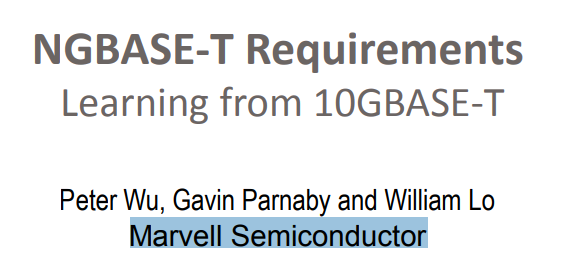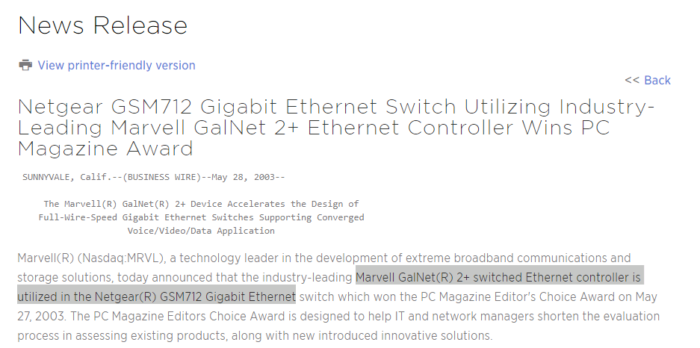How technical translation turns into mini-detective
Introduce myself
I am an IT translator, occasionally - a translation teacher.
I have been translating since 2006, I read Habr.com regularly, but I am publishing here for the first time.
On projects, drawing on technical meaning from words, I sometimes wander off to where translators usually do not look. It happens that interesting stories add up. One of them is below.
History
So, I taught students IT translation, we took apart the switch device and the marketing booklet for it, we came across one interesting suggestion.
I love these - they seem to have a second bottom. The original looked like this: Formally, student translators more or less dealt with it: Yet I didn’t like the translations, I did not immediately figure out why. The first question I asked is
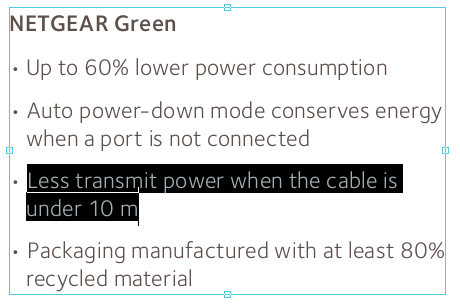
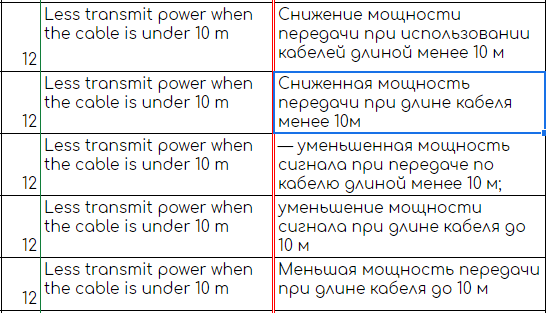
How are signal strength and NETGEAR Green related?
The logic began to crumble almost immediately, because in terms of meaning it turned out that the manufacturer does not boast that the signal power will be less, but that the energy consumption will be lower with a shorter cable length. And this already fits into the NETGEAR Green concept .
I checked my guess, 100% hit ( https://www.netgear.ru/about/environment/environmental-information/default.aspx ): But while I was looking for confirmation of my guess, I had another question:
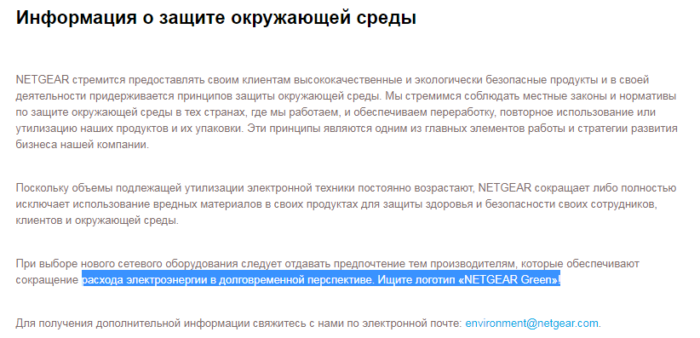
“And why did we actually talk about 10 m? Not 5 , not 15 , not 25 , but exactly 10 ? ”
Perhaps one of you will turn a finger at the temple (as one of the translation colleagues did) - and will be right in his own way: But I am allergic to “white spots” in the text, so I continued searching. They led me to the Green Ethernet program , which several IEEE working groups worked on. The results of the work of these groups eventually turned into the IEEE P802.3az Energy Efficient Ethernet standard (materials and reports can be found here - http://www.ieee802.org/3/az/public/index.html ). Here's how it all started ( https://www.researchgate.net/publication/224189701_IEEE_8023az_The_road_to_energy_efficient_Ethernet/download ):

The idea of creating a standard for Energy Efficient Ethernet began with a tutorial presented to members of the IEEE 802 Working Group in July 2005. Through the months that followed that tutorial, many discussions ensued, meetings were held, and presentations were given, leading up to the first step to getting a project started in IEEE 802.3 known as the Call for Interest (CFI). In November 2006, a panel presentation was given to the IEEE 802.3 Working Group describing the rationale for forming a study group to determine the need for an EEE project, which was followed by a successful CFI vote. The first meeting of the EEE Study Group was held in January 2007.
There were many committees, there were even more proposals for improving the cost-effectiveness of the switches - they basically boiled down to optimizing the ports - de-energize the inactive, put them to sleep, work in different power modes, depending on the data transfer speed, optimize power consumption when switching speeds.
It’s funny, but I didn’t find a single report on the cable length, although Cisco and D-Link cite the work of this group and this standard.
Cisco specifically announced the Short-Reach Mode option ( https://www.cisco.com/assets/sol/sb/Switches_Emulators_v2_3_5_xx/help/250/index.html#page/tesla_250_olh/ts_port_management_09_25.html ):
Short-Reach Mode —This feature provides for power savings on a short length of cable. After cable length is analyzed, the power usage is adjusted for various cable lengths. If the cable is shorter than 30 meter for Tengigabit ports and 50 meter for other type of ports, the device uses less power to send frames over the cable, thus saving energy. This mode is only supported on RJ45 GE ports; it does not apply to Combo ports. This mode is disabled by default.
So, the first digit appeared - 30 meters .
What does D-Link say?
In his publication, D-Link (http://www.dlinkgreen.com/greensupplychainmanagement.asp) mentions 20 meters :
D-Link Green Technology detects Ethernet cable length and adjusts power usage to save energy. This way, a port connected to a 20-meter cable only uses as much power as it needs, instead of using full power, which is only needed for 100-meter cables. If cable length is less than 20 meters , D-Link Green Technology can save up to 9.3% power used for each system.
It was rather strange to observe the silence on this subject by NETGEAR - it seems to have its own program and, as we have seen, NETGEAR GREEN - but there are no details.
Two pieces fell into my eyes, which were suggestive.
Short-Reach Mode in the NETGEAR switches , it turns out, is provided (here Cisco is not alone) .
Here is a screenshot of their manual for the switch, with more than 300 pages, where we see the mention of Short Reach Admin Mode : Here are the explanations from this guide:
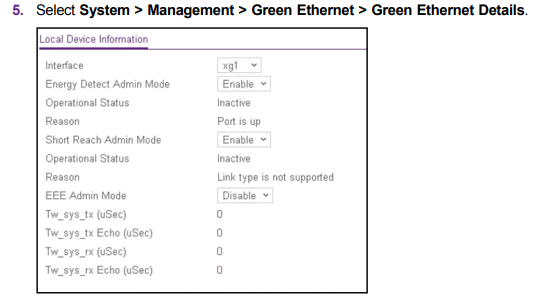
The selection from the Short Reach Admin mode menu is fixed at Enable. With this mode enabled, the port transitions to low power mode when the cable length is less than a certain limit .
And yet, the figure of 10 m did not flash anywhere.
But where did she come from?
In the end, I came across a short report ( http://www.ieee802.org/3/NGBASET/public/jan13/WuParnaby_01a_0113_NGBT.pdf ) as part of the IEEE 802.3 committee (dealing with Ethernet issues), in particular there is such a slide: Yeah , here the 10 m figure appeared - the study was started from it. It is she who shows us that to transmit a signal through a 10 m cable, 65-85% of the energy that would be required to transmit over a 100 m cable would be required .
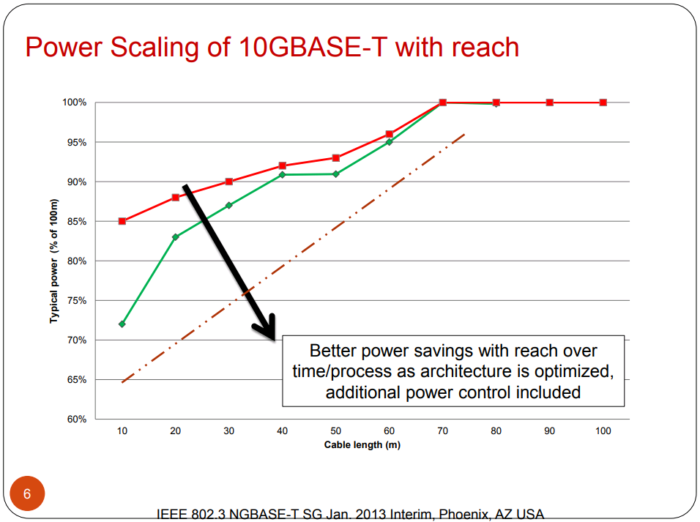
This, by the way, opens the veil for yet another translation mystery, on the interpretation of which I also racked my brains: Has consumption become 60% less ? Or did it drop to 60% ? Translation students, too, were not unanimous: Well, now everything seems to have decomposed. Or not all? No, not all, one question remains:

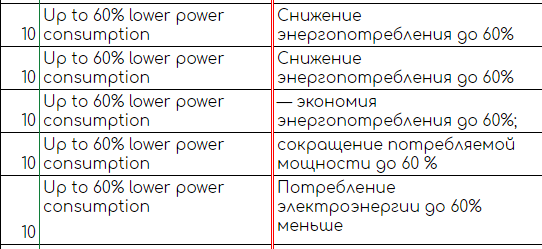
Does NETGEAR have anything to do with this 10 meter cable report?
Let's look at the title page of the report: Now let's see if Marvell Semiconductor is a NETGEAR supplier ? Yes! Even as it is! They have been friends at least since 2003 (and the report was - for a minute - in 2013 ): Here is the publication ( https://investor.marvell.com/news-releases/news-release-details/netgear-gsm712-gigabit-ethernet -switch-utilizing-industry ): Now for sure (as far as I can tell) , everything fell into place. I hope it was interesting. Regards, Eugene
